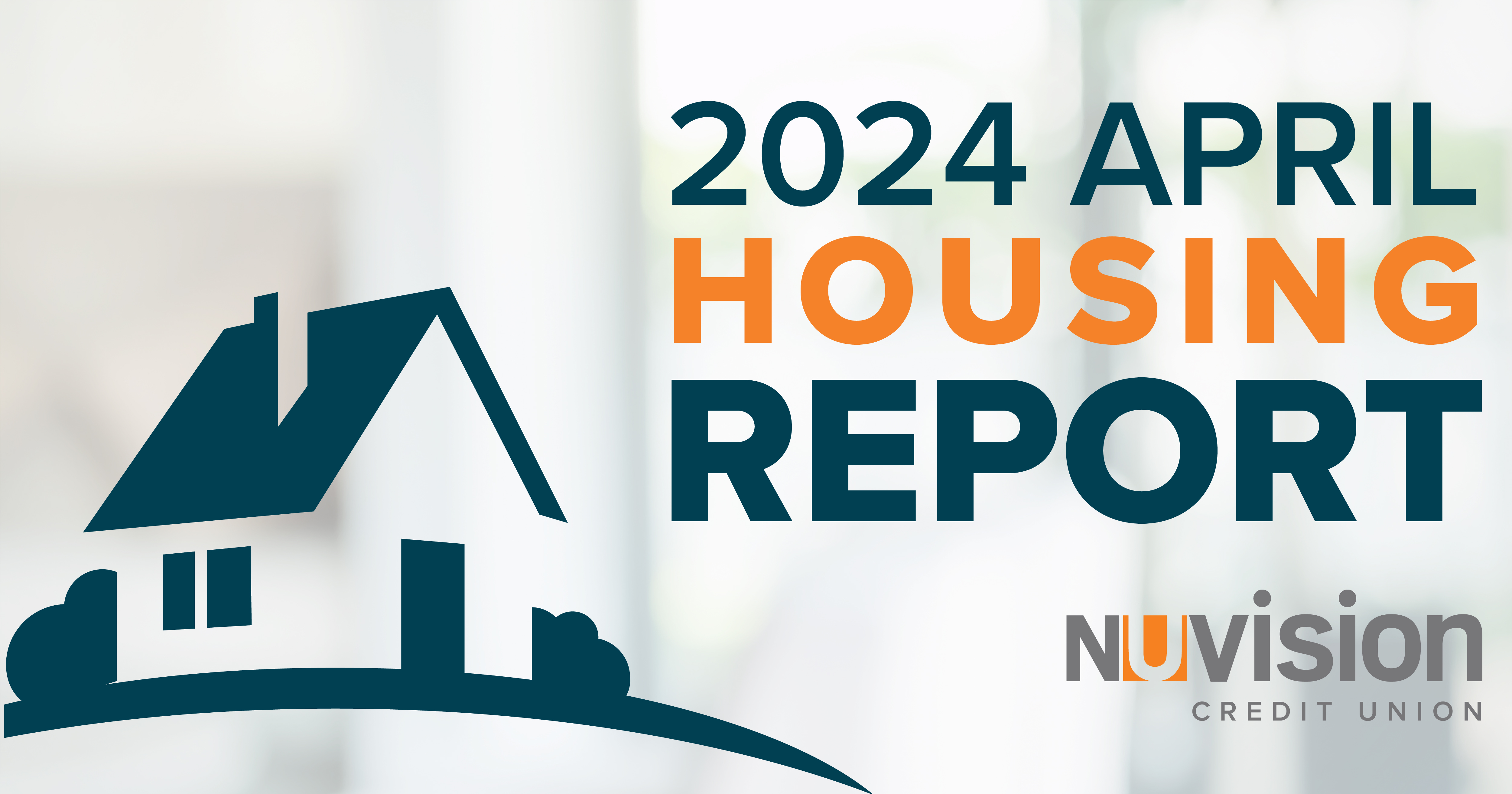April 2024 U.S. Housing Market Overview: A Balancing Act of Supply and Demand

As the spring buying season goes into full swing, the U.S. housing market in April 2024 continues to present a complex mix of rising home prices, shifting regional demands, and shifting buyer and seller behaviors. Despite fluctuations in interest rates and regional disparities, the national housing market exhibits resilience, with significant implications for both first-time and seasoned homebuyers.
Rising Prices Amid Sales Decline and Shifting Migration Patterns
In March 2024, the U.S. housing market saw mixed signals as home prices continued their upward trajectory, increasing by 4.8% year-over-year to a median price of $420,357, according to Redfin. However, the market faced a decline in sales volume, with the number of homes sold dropping by 9.84% to 406,120 units compared to the previous year. This dip in sales occurred even as the overall housing supply slightly increased by 3.8%, with 1,510,113 homes available for sale. Despite a reduction in newly listed homes by 0.45%, the market's competitiveness remained high with 30% of homes selling above the asking price, an increase from the prior year.
Significant migration trends also impacted the housing dynamics, with 24% of homebuyers looking to relocate to different metro areas. Top relocation destinations included Phoenix, Las Vegas, Sacramento, Sarasota, and Cape Coral, driven by buyers moving away from higher-cost areas such as Los Angeles, New York, San Francisco, Seattle, and Washington. This migration has reshaped demand in these regions, influencing both the availability and the price of homes. As buyers navigate this complex market, they face a landscape marked by rising prices, relatively low supply, and significant regional shifts, underscoring the ongoing challenges and opportunities within the U.S. housing sector.
March 2024 National Housing Trends: Insights from the National Association of Realtors
In March 2024, the U.S. housing market faced a nuanced landscape, as evidenced by data from the National Association of Realtors (NAR). Despite the overall sales of existing homes dipping by 4.3% to 4.19 million, the median sales price saw a robust increase of 4.8% year-over-year to $393,500. This price increase aligns with a slight rise in inventory levels, which grew by 0.5 months compared to March 2023, totaling 3.2 months of available inventory. The housing market's regional performance varied, with sales declining in the Midwest, South, and West, but showing an unexpected increase in the Northeast for the first time since November 2023.
The REALTORS® Confidence Index for March reflected optimism about the market's direction despite the challenges. The index revealed that 29% of homes sold above list price, an increase from 20% in the previous month and 28% from the year prior. However, buyer and seller traffic expectations showed mixed signals; 26% of respondents anticipated an increase in buyer traffic over the next three months—a decrease from 30% the previous month, but an increase from 21% the year before. Similarly, expectations for seller traffic remained stable month-to-month but improved from the previous year. Additionally, the market dynamics continued to favor quick sales, with 60% of properties selling in less than a month, and competitive contract activity, where a notable 28% of buyers made all-cash purchases. These trends underline a competitive market that, while facing inventory and interest rate challenges, continues to demonstrate significant activity and interest among buyers looking beyond city centers.
New Construction Slows as Market Adjusts to High Interest Rates, Existing Home Sales Dip"
In March 2024, Zillow reported a notable slowdown in new home construction, with housing starts declining across the board. Total housing starts fell to 1,321,000 units, a 14.7% decrease from February and a 4.3% drop year-over-year, reflecting builders' anticipation of sustained high interest rates. However, single-family starts presented a contrasting trend, rising 21.2% compared to the previous year, even as the number of single-family homes under construction remained high. This suggests that while overall construction activity cooled, demand for single-family homes continues robustly. This dynamic is partly due to builders adjusting to a market environment where higher interest rates are likely to persist longer than initially expected, leading to cautious but targeted building activities.
The existing home sales segment also reflected challenges, with sales dropping by 4.3% to a seasonally adjusted annual rate of 4.19 million, a decline from the previous year's figures. The inventory of homes for sale increased significantly, with a 14.4% rise from the previous year, leading to a total housing inventory of 1.11 million units at the end of March. This increase in supply, coupled with the pressure from rising mortgage rates, has begun to balance the seller-heavy market dynamics of recent years. Zillow Senior Economist Orphe Divounguy notes that despite these pressures, the market response has been resilient, with homes selling swiftly when priced competitively. This shift indicates a gradual stabilization of the market, with inventory levels suggesting potential for more price adjustments if high interest rates persist.
Challenges and Disparities
April 2024 paints a complex picture of the U.S. housing market, marked by significant challenges for first-time buyers and a divergent landscape across different market segments. According to Steven Thomas, a real estate expert with decades of experience and a degree in Quantitative Economics and Decision Sciences from the University of California, San Diego, first-time home buyers are facing a tightening squeeze exacerbated by rising mortgage rates and a noticeable scarcity in the availability of entry-level homes. This situation has been building for the past couple of years, with many potential buyers—primarily millennials reaching the typical first-time buyer age of 32—finding themselves unable to enter the market. These potential homeowners are increasingly sidelined due to escalating home prices coupled with stubbornly high mortgage rates, leading to a stagnant wait for more favorable market conditions that have yet to arrive.
Key Takeaway Points from the April 2024 U.S. Housing Market Report
- Continued Price Increases and Sales Decline: The U.S. housing market experienced a continued upward trend in home prices, with a 4.8% increase year-over-year in March 2024, while the overall number of homes sold declined by 9.84% during the same period. Despite a slight increase in the housing supply, the market's competitiveness has remained high, with 30% of homes selling above their listing price.
- Significant Migration Trends Reshaping Markets: There is a notable shift in migration patterns, with 24% of homebuyers looking to move to different metro areas, favoring locations such as Phoenix, Las Vegas, and Sacramento. This trend is driven by buyers moving away from higher-cost areas, impacting both the availability and pricing of homes in the regions they leave and those they move to.
- Regional Variances in Market Performance: According to the National Association of Realtors, there's been a regional discrepancy in sales performances, with the Northeast experiencing an increase in home sales for the first time since November 2023, contrasting with declines in other regions. Inventory levels have also slightly increased, indicating a slowly balancing market.
- REALTORS® Confidence Index Shows Mixed Signals: Despite overall market challenges, the REALTORS® Confidence Index, a key indicator of housing market strength based on a monthly survey sent to over 50000 real estate practitioners, remained optimistic, with 29% of homes selling above list price. However, there are mixed expectations for future buyer and seller traffic, suggesting ongoing uncertainty in market conditions.
- Slowdown in New Home Construction: Builders have scaled back on new home construction due to prolonged high interest rates, with a significant decrease in housing starts reported in March 2024. However, demand for single-family homes remains strong, indicating a targeted response to sustained market needs despite broader construction slowdowns.
- Existing Home Sales Reflect Market Pressures: The existing homes segment has shown a decrease in sales alongside an increase in inventory, a sign of the market adjusting to the dual pressures of higher mortgage rates and increased supply. This adjustment suggests a potential for more competitive pricing and conditions moving forward.
- Challenges for First-Time Buyers: First-time home buyers, particularly millennials, are facing significant hurdles due to high mortgage rates and a lack of affordable entry-level homes. This has led to many potential buyers remaining on the sidelines, waiting for more favorable conditions that have yet to materialize.




